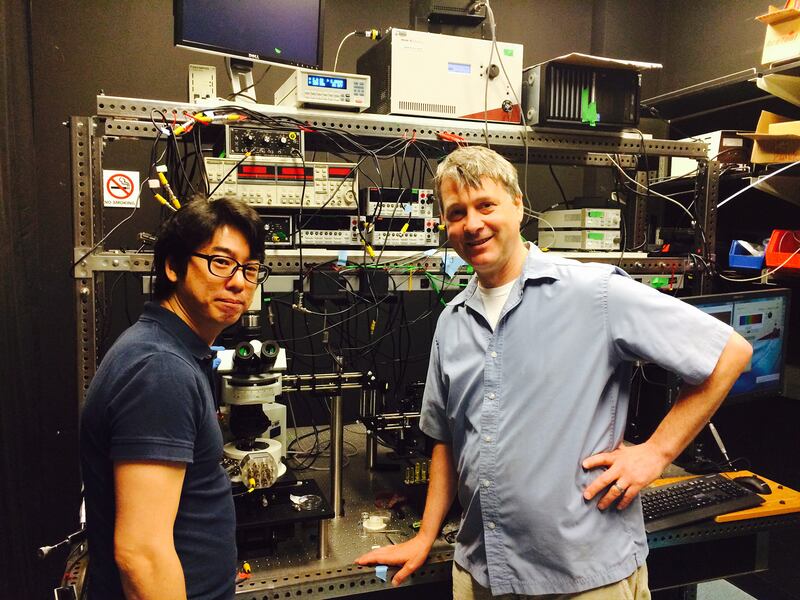It’s a finding that may change the way computers function in the coming decade.
Scientists at Columbia University have created a graphene filament that glows bright enough to be visible to the naked eye. It’s a massive step in finding a practical use for the material, which could make its way into microchips, displays, lightbulbs, and optical networks with everyday application.
James Hone, who leads the research group and has been working with graphene for eight years, says the breakthrough makes perfect sense. “To me, it’s just one of those things that makes complete sense after you see it, but you never would have thought about it ahead of time,” he said. “And that’s always a fun part of science.”
ADVERTISEMENT
It’s an experience a lot of scientists have been hoping to have. Part of the problem in the decade since graphene was discovered has been finding a use. The latticework, two-dimensional structures are super strong, conductive, and cheap to make, but practical applications have been scarce and, so far, impractical.

But Columbia University’s Hone Group may have crossed that divide with its study, which began with South Korean partners. “The basic idea was to study the properties of this free suspended graphene and how hot you could get it,” said Hone, “and how heat would move through it. And the light emission was a bit fortuitous, at least at first.”
Hone gives credit for the initial research to the Koreans. “The first author, [Young Duck Kim], is a current postdoc with us,” he said. “Most of the work was done in Korea, so they came up with the original idea.”
Now that they’ve found the light-emitting properties, Hone says graphene could find its way into both lightbulb and computer chip markets in the future. In hindsight, he says, the similarities between graphene and tungsten, which is also used in lightbulbs, are obvious.
“The reason both are used is because they survive very, very high temperatures,” he said. “There are only a few metals that survive up to such high temperatures, and tungsten was one of them. However, carbon is another. Carbon was actually used in Edison’s first lightbulbs. And graphene is just a very pure crystalline form of carbon.”
But where tungsten falls short, graphene is a perfect solution: the small scale. “To me the interesting thing is that tungsten does not work in micro scale,” said Hone. “You just can’t get it hot enough.”
But graphene has proved it can get hot enough on a scale so small that it can fit on top of or adjacent to a silicon chip: “To have something that is only a couple micrometers on the side and an atom thick, and you can actually see the light with the naked eye at all, is pretty amazing,” he said.
Hone doesn’t think graphene will replace silicon but says the partnership between the two materials will be helpful in the future. “[Replacement] was some of the hope originally with graphene. But I think after 10 years of the basic physics of graphene, it’s shown that that’s really not going to happen. It’s going to be more complimentary to silicon.”
The scaled-up operation of the Columbia team’s findings, he says, could lead to breakthroughs in on-chip optical communication. “Right now we send communication over long distances through optical fibers,” he said. “Most of the Internet is sort of fiber optics, but within a chip all of the information is still electrical.”
So there’s kind of a worldwide push, Hone says, of “can we take that same fiber optic network, and have it route information around a computer chip also? And if you can do that, you can do things a lot faster for a lot less power, and you can much more easily have chips talk to the fibers.”
“One of the interesting things about graphene is it’s transparent, and it’s very bendable and flexible,” he said. If his team can scale up, graphene could also be used, Hone says, as “a screen, maybe in micro devices rather than in a larger scale.”
Either way, the findings mean more development is needed. But for Hone and his team, prospecting for value just got a little easier: “You can use it to generate light, you can use it to detect light…it’s kind of the material that can do everything.”





